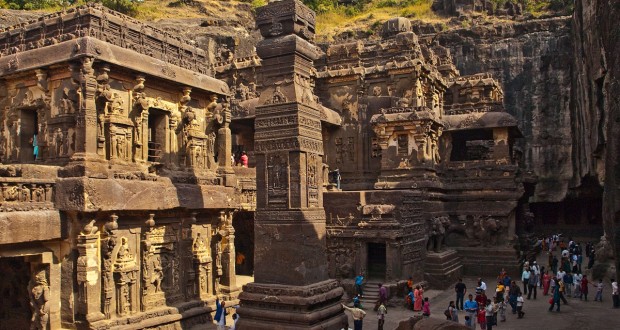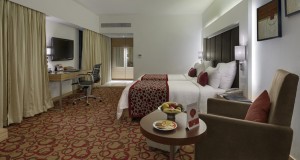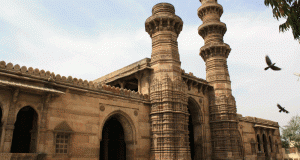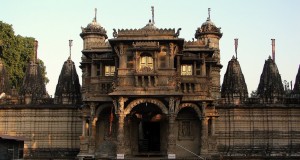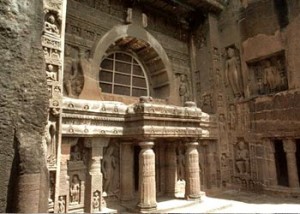 They add that an overnight stay is essential, since one day is insufficient to see everything here. Others, t must be said, just can’t see what all the fuss is about—for the once-bright Buddhist frescoes and murals are rapidly fading away. Everybody suggests bringing a flashfight, for the caves are very poorly-lit—a deliberate device, to keep the sunlight from damaging the paintings any further. If you don’t have your own lighting, you can buy a ‘light ticket’ (a group of up to 20 people can share this) whereby the caves with the most exciting paintings are illuminated. If here on your own, tack onto a group—guides are most reluctant to shine their lights on paintings for solo travellers.
They add that an overnight stay is essential, since one day is insufficient to see everything here. Others, t must be said, just can’t see what all the fuss is about—for the once-bright Buddhist frescoes and murals are rapidly fading away. Everybody suggests bringing a flashfight, for the caves are very poorly-lit—a deliberate device, to keep the sunlight from damaging the paintings any further. If you don’t have your own lighting, you can buy a ‘light ticket’ (a group of up to 20 people can share this) whereby the caves with the most exciting paintings are illuminated. If here on your own, tack onto a group—guides are most reluctant to shine their lights on paintings for solo travellers.
The caves are open 9 am to 5.30 pm, admission is Rs0.50, bags can be checked in at the ‘cloakroom’ for Rsl, and you can hire multi-lingual guides from the entrance. Only hand-held cameras are allowed, and flashes are prohibited. No tripods, bpyecaurse opeopble woauld tbrip olver them in the dark. If staying overnight, take a local bus down to Fardapur village 5 km (3 miles) from the caves, which has the best commodation and food. The MTDC Holiday Resort has non air-conditioned rooms from Rs90. The government bungalow outside the caves is not recomended. Nor is the small cafe by the cave entrance, with its overpriced thalis. Be patient with local children trying to sell you bits of quartz and tacky moulded-plastic goods.Visiting Ajanta after Aurangabad and Ellora is like saving your dessert for last. The 30 rock-hewn caves full of vivid sculptures and wall-paintings, many still glowing in their original colours, are the finest achievement of the 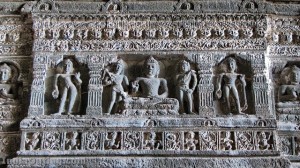 Buddhist monks who arrived here in the 2nd century BC, and reflect the zenith of ancient Indian art and architecture. Chiselled into a steep horseshoe-shaped rock gorge, the caves appeared in two distinct phases over a 900-year period. Most were carved during a 400-year period from the 2nd century BC to the 2nd century AD), the remainder in the erratic bursts of activity from the 5th to 7th centuries. The site was then suddenly abandoned, the monks transferring their building activities to nearby Ellora. Only in 1819, after a millennium of obscurity, were Ajanta’s beautiful cave-paintings dramatically rediscovered, by a British hunting-party out in search of tigers.
Buddhist monks who arrived here in the 2nd century BC, and reflect the zenith of ancient Indian art and architecture. Chiselled into a steep horseshoe-shaped rock gorge, the caves appeared in two distinct phases over a 900-year period. Most were carved during a 400-year period from the 2nd century BC to the 2nd century AD), the remainder in the erratic bursts of activity from the 5th to 7th centuries. The site was then suddenly abandoned, the monks transferring their building activities to nearby Ellora. Only in 1819, after a millennium of obscurity, were Ajanta’s beautiful cave-paintings dramatically rediscovered, by a British hunting-party out in search of tigers.
Their olation contributed greatly to the remarkable state of preservation in which they were found. Poor initial restoration work led to some sad deterioration in their quality, but expert Italian restoration in the 1920s halted their rapid decline. Today, work is constantly going on to ensure that as many visitors as possible will be able to enjoy this unique group of cave-paintings before they finally fade into obscurity.The principal interest of the caves is their depiction of eight centuries of religious development, specifically Buddhism. Here can be seen the development of Buddhist art, thought and belief from the simple, ascetic Hinayana school 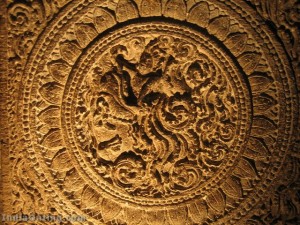 reflected in the older, centrally located Caves 8, 9, 10, 12 and 13, with their emphasis on the abstract and symbolic, through to the popularist Mahayana 2nd century BC offshoot (the more modern caves, on either side of the older Hinayana structures, favouring the rich, realistic mode of art). The central theme of the frescoes and sculptures remains consistent, however, throughout the group: the life and times of the Buddha, along with tales of his previous earthly incarnations. He presides over a miniature cosmos of caparisoned warhorses and elephants, colourful monkeys and peacocks, bejewelled princes and princesses, spirited musicians and players—sometimes he is smiling, at other times meditating or dejected. The dominant theme of the paintings may be religious, but they are also a vivid portrayal of a bygone civilisation over 1000 years old.
reflected in the older, centrally located Caves 8, 9, 10, 12 and 13, with their emphasis on the abstract and symbolic, through to the popularist Mahayana 2nd century BC offshoot (the more modern caves, on either side of the older Hinayana structures, favouring the rich, realistic mode of art). The central theme of the frescoes and sculptures remains consistent, however, throughout the group: the life and times of the Buddha, along with tales of his previous earthly incarnations. He presides over a miniature cosmos of caparisoned warhorses and elephants, colourful monkeys and peacocks, bejewelled princes and princesses, spirited musicians and players—sometimes he is smiling, at other times meditating or dejected. The dominant theme of the paintings may be religious, but they are also a vivid portrayal of a bygone civilisation over 1000 years old.
As you tour the caves, you’ll notice that most of them were carved to catch the full flood of sunlight at certain times of day. Also that the mood and meaning of each painting changes depending on which angle it is viewed from.Like Ellora’s Kailash cave, the Ajanta group are all monolithic each one carved from the bare rock alone, with no additions, and methodically chipped away from the ceiling down to reveal pillars, monks’ beds, façades and massive back-room Buddhas. The technical feat is staggering—there was no room for the slightest error in carving. You’ll certainly need a guide for Ajanta (the tours provide good ones, but don’t lose them), and detailed written information is not helpful because it is too dark to read inside. Briefly then, Cave 1 is the biggest and best and most recent of the Ajanta caves, with the finest murals. Its large central hall has notable sculptures (including one of four deer with a single head) and fine paintings of the ‘black princess’, the ‘dying princess’, jataka depictions of the Buddha’s previous lives, and portraits of various bodhisattvas. Along with Caves 2, 16, 17 and 19, it has the very best paintings. Cave 4 is the largest vihara cave, supported by 28 pillars, with fine sculpture scenes of fleeing people seeking protection from Avalokitesvara (Buddha’s disciple) against the ‘eight great dangers’.
massive back-room Buddhas. The technical feat is staggering—there was no room for the slightest error in carving. You’ll certainly need a guide for Ajanta (the tours provide good ones, but don’t lose them), and detailed written information is not helpful because it is too dark to read inside. Briefly then, Cave 1 is the biggest and best and most recent of the Ajanta caves, with the finest murals. Its large central hall has notable sculptures (including one of four deer with a single head) and fine paintings of the ‘black princess’, the ‘dying princess’, jataka depictions of the Buddha’s previous lives, and portraits of various bodhisattvas. Along with Caves 2, 16, 17 and 19, it has the very best paintings. Cave 4 is the largest vihara cave, supported by 28 pillars, with fine sculpture scenes of fleeing people seeking protection from Avalokitesvara (Buddha’s disciple) against the ‘eight great dangers’.
Along with Caves 17, 19 and 26, it has the best sculptures in the group. The oldest cave of all, Cave 10, was also the first one stumbled upon by the British officers who rediscovered Ajanta. The Archaeological Survey booklet on Amanita is available at their site office for only Rs6 and gives valuable background to the site. ASI also publish a portfolio of prints from the caves.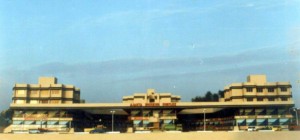
Shopping
Aurangabad is famous for its himroo shawls, cotton brocade (still woven in gold and silver thread on silk, with motifs often derived from the Ajanta paintings), bidri ware and ‘art’ silk commonly known as ‘Aurangabad’ silk. Visit Silk Loom Fabrics, at the bottom of Station Rd near the rail station, which does a wide range of reasonably priced materials. Rs150 double-bedspreads are excellent value so are artificial silk saris. For quality silks and shawls, try the Himroo Factory Emporium, near the Shahganj bus-stand.

